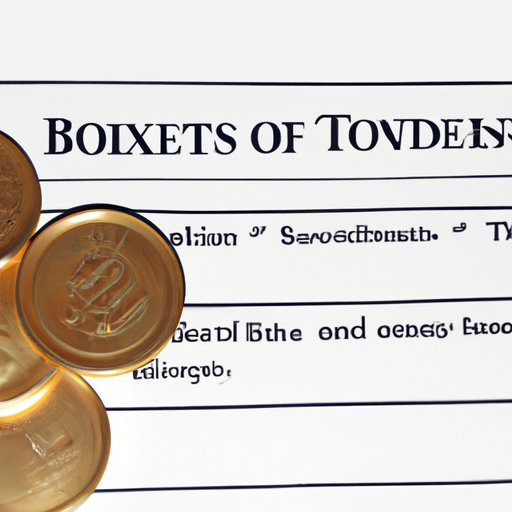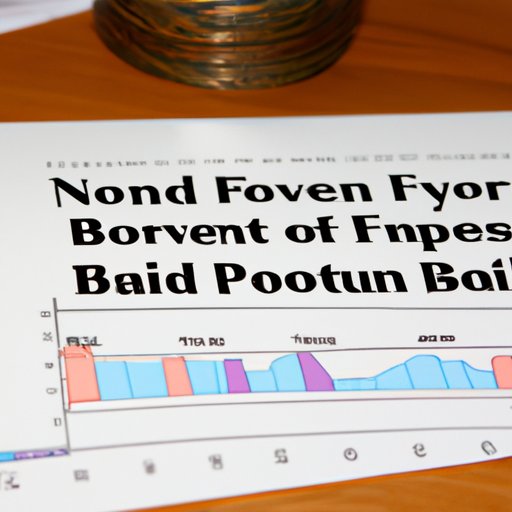Introduction
Bond funds are one of the most popular investments available today. They offer investors the opportunity to diversify their portfolios, reduce risk, and potentially earn steady returns over time. But what exactly are bond funds, and are they a good investment now? In this article, we’ll explore the pros and cons of investing in bond funds and investigate strategies for managing risk and maximizing returns.
Definition of Bond Funds
Bond funds are simply collections of bonds that are managed by professional portfolio managers. The funds are typically composed of government bonds, corporate bonds, high yield bonds, and other types of debt instruments. By investing in a bond fund, you can gain exposure to multiple types of bonds without having to purchase them individually.
Reasons to Invest in Bond Funds
There are several reasons why investors may choose to invest in bond funds. First, bond funds offer the opportunity for relatively low-risk investing. Because the funds are composed of multiple different types of bonds, the risk of any individual bond defaulting is minimized. Bond funds also offer the potential for steady returns over time, as the underlying bonds mature and pay out interest payments.
Analyzing the Pros and Cons of Bond Funds as an Investment
Benefits of Investing in Bond Funds
One of the primary benefits of investing in bond funds is the diversification they offer. By investing in multiple different types of bonds, you can spread your risk across a variety of different asset classes and potentially minimize losses in any one sector. Bond funds also tend to be less volatile than stocks, so they can provide a more stable long-term investment option.
Another benefit of investing in bond funds is that you don’t have to worry about the timing of your investments. With stocks, you have to constantly be monitoring the market to make sure you’re buying and selling at the right times. With bond funds, however, you can simply buy and hold the fund and let it do its thing. This makes them a great choice for investors who don’t have the time or inclination to actively manage their investments.
Risks of Investing in Bond Funds
As with any investment, there are risks associated with investing in bond funds. One of the biggest risks is that of interest rate changes. When interest rates rise, the value of existing bonds falls, which can lead to losses in the value of your bond fund. Additionally, some bond funds may invest in lower-quality bonds, which can increase the risk of default and lead to further losses.

The Impact of Interest Rates on Bond Fund Returns
How Interest Rate Changes Affect Bond Fund Performance
Interest rates have a direct impact on bond fund performance. When interest rates rise, the value of existing bonds falls, leading to losses in the value of your bond fund. On the other hand, when interest rates fall, the value of existing bonds rises, leading to gains in the value of your bond fund.
It’s important to understand how interest rate changes can affect your bond fund investments so that you can make informed decisions about when to buy and sell. For example, if you believe that interest rates are likely to rise in the near future, you may want to avoid investing in a bond fund until after the rate change has occurred. On the other hand, if you believe that interest rates will remain relatively stable or even decline, then investing in a bond fund may be a wise move.
Strategies for Managing Interest Rate Risk
There are several strategies you can use to manage interest rate risk when investing in bond funds. One strategy is to invest in short-term bonds rather than long-term bonds. Short-term bonds are less sensitive to interest rate changes, so they tend to be less risky than long-term bonds. Another strategy is to invest in a bond fund that invests in both short-term and long-term bonds. This can help you reduce risk while still providing some potential for growth.

Exploring Different Types of Bond Funds and Their Risks
Government Bonds
Government bonds are bonds issued by national governments. These bonds tend to be the least risky type of bond, as they are backed by the full faith and credit of the issuing government. Government bonds typically offer lower returns than other types of bonds but are generally considered to be a safe investment.
Corporate Bonds
Corporate bonds are bonds issued by companies. These bonds tend to offer higher yields than government bonds but carry greater risk due to the fact that they are not backed by the full faith and credit of a government. Investors should be aware of the creditworthiness of the company issuing the bond before investing.
High Yield Bonds
High yield bonds, also known as “junk bonds”, are bonds issued by companies with lower credit ratings. These bonds offer higher yields than other types of bonds but come with a greater risk of default. As such, they should only be considered by investors who have a high tolerance for risk.
Understanding the Risks of Each Type of Bond Fund
No matter what type of bond fund you choose to invest in, it’s important to understand the risks associated with each type of bond. Government bonds tend to be the safest, while corporate bonds and high yield bonds carry greater risk. It’s important to assess the risks before investing and only invest in those funds that you are comfortable with.

Examining the Tax Benefits of Investing in Bond Funds
Tax Advantages of Bond Funds
Investing in bond funds can provide investors with several tax advantages. Bond funds are typically taxed at the long-term capital gains rate, which is lower than the rate for most other investments. Additionally, many bond funds offer tax-free municipal bonds, which can provide investors with additional savings.
Tax Implications to Consider Before Investing
It’s important to understand the tax implications of investing in bond funds before doing so. Some bond funds may be subject to the alternative minimum tax or the net investment income tax, so it’s important to research the specific fund you’re considering investing in before committing your money.
Comparing Bond Funds to Other Investment Options
Comparing Bond Funds to Stocks
Bond funds are generally considered to be less risky than stocks. Stocks have the potential for higher returns, but they also come with a greater risk of losing money. Bond funds, on the other hand, tend to be more stable and have the potential for steady returns over time.
Comparing Bond Funds to Mutual Funds
Mutual funds and bond funds are similar in that they both provide investors with the ability to diversify their investments. However, mutual funds tend to be more varied than bond funds, as they often contain a mix of stocks and bonds. Bond funds, on the other hand, are typically composed solely of bonds. As such, bond funds tend to be less risky than mutual funds.

Evaluating the Performance of Bond Funds Over Time
Factors That Influence Bond Fund Performance
The performance of bond funds is largely determined by the underlying bonds in the fund. Factors such as interest rates, inflation, and economic conditions can all have an impact on the performance of bond funds. Additionally, the management style of the fund manager can also have an effect on performance.
Assessing Historical Returns
When evaluating the performance of a bond fund, it’s important to look at its historical returns. This will give you an idea of how the fund has performed in the past and can help you make an informed decision about whether or not to invest in it.
Investigating Strategies for Investing in Bond Funds
Diversification Strategies
Diversification is key when investing in bond funds. It’s important to spread your investments across different types of bonds to minimize the risk of any one bond defaulting. Additionally, it’s a good idea to invest in funds that invest in both short-term and long-term bonds to ensure that you’re not overly exposed to changes in interest rates.
Laddering Strategies
Laddering is a strategy used by some investors to manage interest rate risk. With laddering, investors purchase bonds with varying maturities, such as one-year, three-year, and five-year bonds. This allows them to take advantage of changes in interest rates over time without having to sell their bonds prematurely.
Conclusion
Summary of Bond Fund Investing
Bond funds can be an attractive investment option for those looking for low-risk, steady returns. They offer the potential for diversification, tax advantages, and the ability to manage interest rate risk. However, it’s important to understand the risks associated with investing in bond funds and to assess the performance of a fund before investing.
Final Thoughts on Bond Funds as an Investment Option
Bond funds can be a great way to diversify your portfolio and potentially earn steady returns over time. However, it’s important to understand the risks associated with investing in bond funds and to evaluate the performance of the fund before committing your money. With the right strategy and a bit of research, bond funds can be a great addition to any investor’s portfolio.
(Note: Is this article not meeting your expectations? Do you have knowledge or insights to share? Unlock new opportunities and expand your reach by joining our authors team. Click Registration to join us and share your expertise with our readers.)
